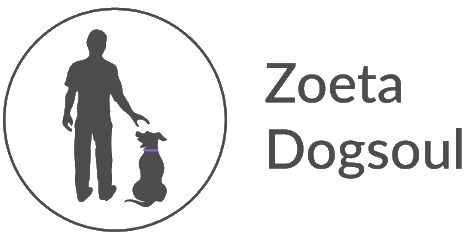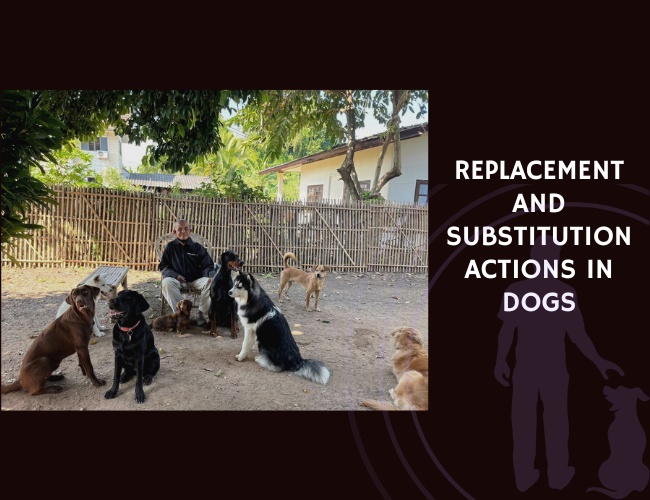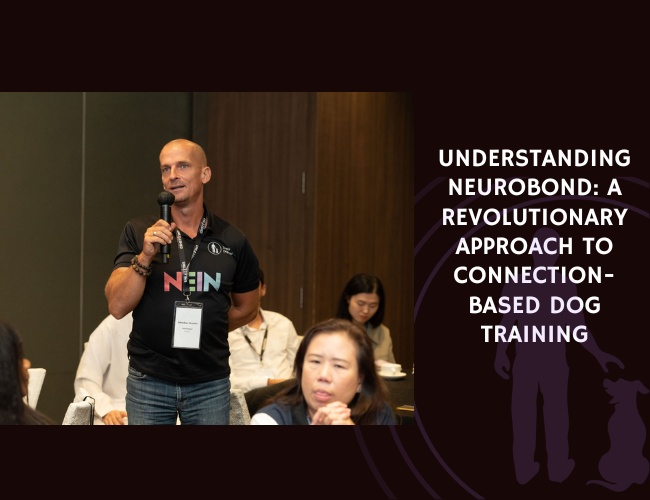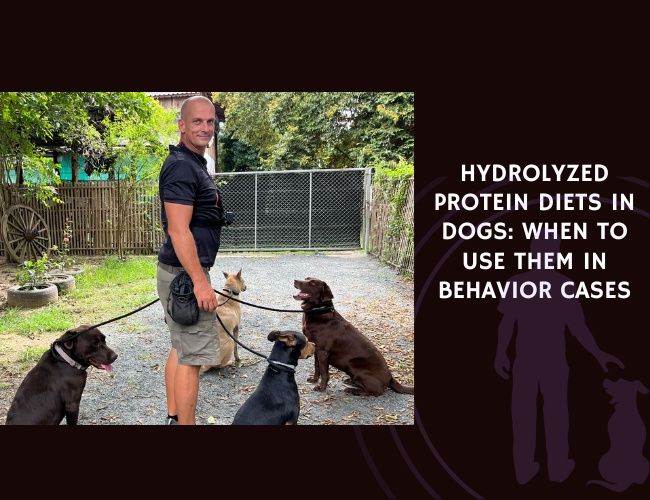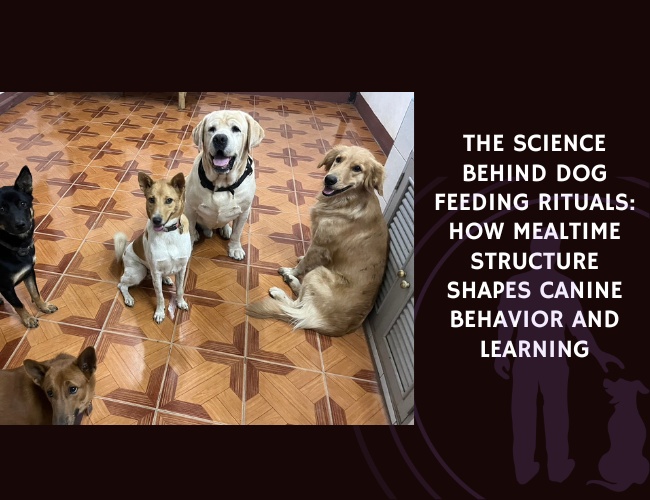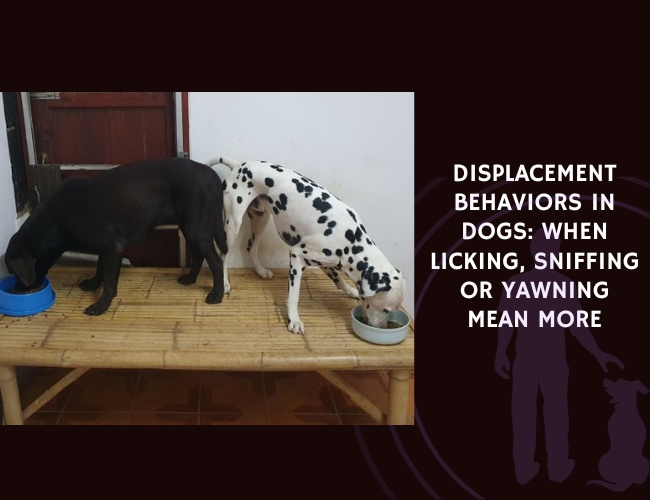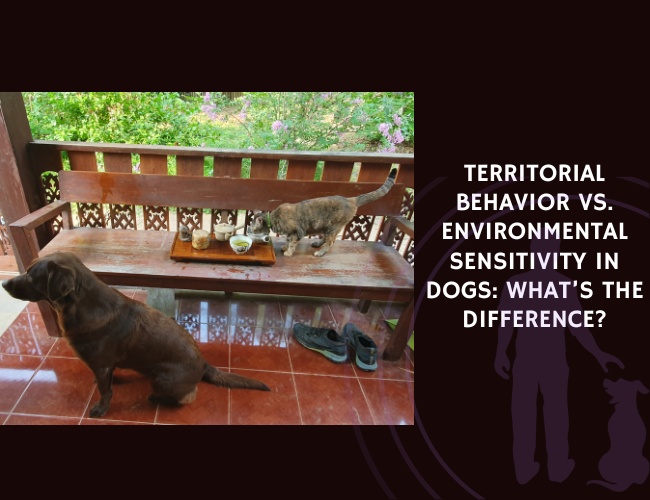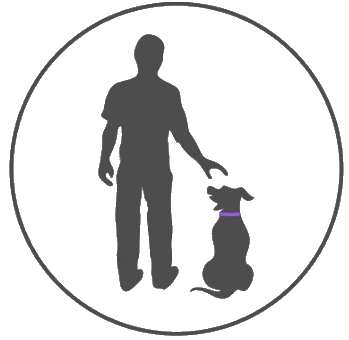Dogs are remarkable creatures, capable of showing a wealth of emotions and behaviors that often mirror our own. Yet, understanding why they do some of the things they do can sometimes be a puzzle for pet owners. Among these behaviors are those termed replacement, substitution, and alternative actions, each responding to different unmet needs or stimuli. Grasping the nuances of these actions is critical not just for the sake of curiosity but for fostering better communication and more effective training strategies with our canine companions.
Overview of Replacement, Substitution, and Alternative Actions in Dogs
Imagine a dog chewing on a chair leg; it may appear mischievous at first glance, but this could be a replacement action—where a natural need, such as the instinct to chew, is being redirected in the absence of appropriate toys. Similarly, when a dog snaps at the air instead of chasing a squirrel, it’s exhibiting a substitution behavior. This redirected behavior serves as an outlet for their natural hunting instincts when the real target is unattainable. Then there are alternative actions, where a dog might sit instead of rolling over as commanded, potentially due to a misunderstanding or its own preference. Each of these behaviors tells a story of an underlying cause and need within the dog.
The Importance of Understanding Canine Behavior
Why should we bother decoding these behaviors? Because they are key to unlocking a harmonious relationship with our pets. Knowledge of replacement, substitution, and alternative actions empowers dog owners to identify the roots of certain behaviors. It enables them to tailor their approach to training and daily interaction, leading to a happier, well-adjusted dog. Recognizing these behaviors as communication rather than mere disobedience can transform the way owners respond to their dogs, paving the way for a deeper bond and mutual respect.
Understanding Replacement Actions in Dogs
What Are Replacement Actions?
At the heart of canine behavior lies a complex web of needs and responses. Replacement actions in dogs are behaviors that arise when their usual activities are curtailed or when they cannot fulfill a need in their preferred manner. These actions stand out because they divert from what we might expect in a given situation. Instead of settling for inactivity, dogs often find innovative ways to address their needs, which can lead to replacement behaviors.Replacement behaviors in dogs are a fascinating aspect of their adaptability and cognitive abilities. These behaviors demonstrate how dogs cope with stress, frustration, and limitations imposed by their environments or situations. Understanding these behaviors not only sheds light on canine psychology but also helps pet owners, trainers, and behaviorists support healthier, happier lives for dogs.
### Examples of Replacement Behaviors
1. **Chewing on Objects:** If a dog wants to chew but doesn’t have an appropriate toy available, it might turn to household items like shoes or furniture. This replacement behavior satisfies the need to chew but isn’t desirable from a human perspective.
2. **Digging in the Yard:** A dog that lacks sufficient physical activity or mental stimulation might start digging as a way to expend energy and satisfy its instinctual needs.
3. **Barking or Howling:** Dogs with separation anxiety or those who crave more interaction may resort to excessive barking or howling as a way to express their needs or attempt to fulfill the desire for attention.
4. **Pacing or Circling:** In the absence of enough space or opportunity to exercise, a dog might pace or circle as a form of self-soothing or to release pent-up energy.
5. **Shadow or Light Chasing:** Some dogs may start shadow or light chasing as a form of entertainment or because it triggers their predatory instinct. This behavior, especially when obsessive, can indicate a lack of mental stimulation or an underlying anxiety issue.
6. **Snapping , Biting other dogs, strangers, family member etc.** Snapping and biting behaviors in dogs can often be manifestations of deeper issues, such as anxiety, fear, territorial instincts, or a response to frustration and overstimulation. These actions might also be considered replacement behaviors in some contexts.
6.1. **Snapping at Other Dogs:** Dogs communicate with one another through body language, vocalization, and occasionally through corrective actions like snapping. This can occur if a dog feels overwhelmed or threatened by the actions of another dog, especially in cases where the dog has not learned appropriate social cues or has had limited socialization experiences. Here, the snapping can be a replacement for flight in situations where escape is not possible or for more nuanced social interactions when the dog lacks the necessary skill set.
6.2. **Biting Strangers or Family Members:** A dog might resort to biting humans due to fear, discomfort with handling, or previous negative experiences. If a dog feels threatened or is in pain and cannot escape the situation, biting can replace the natural flight instinct. The behavior might also stem from resource guarding, where snapping or biting is a replacement for other methods of maintaining possession that the dog deems ineffective in human society.
6.3. **Release of Energy or Boredom:** In scenarios where a dog has surplus energy or is experiencing boredom, their natural inclination for activities such as running, hunting, or playing might be replaced with snapping or biting out of frustration. This replacement behavior signals that the dog’s environment lacks sufficient enrichment and outlets for their physical and mental energy.
Addressing these behaviors involves a multilayered approach focused on understanding the individual dog’s emotions, needs, and experiences:
– Providing adequate exercise, play, and mental stimulation.
– Implementing consistent and gentle training methods to establish clear and safe ways for the dog to interact with other animals and people.
– Creating a secure environment where the dog feels safe and is not pushed beyond its comfort thresholds.
– Consulting with a professional, such as a veterinary behaviorist, to develop targeted strategies for managing and modifying these behaviors.
Recognizing these actions as a form of communication rather than outright aggression allows for more empathetic and effective responses from owners and trainers. By addressing the root causes of these replacement behaviors and offering appropriate alternatives, we can guide dogs toward behaviors that are more harmonious with human cohabitation and strengthen the bond between dogs and their caregivers.
Secondly, recognizing these behaviors early on allows for the implementation of more effective interventions that address the root cause rather than just the symptoms. For example, if a dog is chewing on inappropriate objects, providing them with suitable toys and engaging them in more playtime can satisfy their need to chew in a manner that is acceptable to their human companions. Similarly, a dog that digs in the yard may benefit from more walks or runs, interactive toys, or even participation in dog sports like agility or flyball, which can help redirect their energy and satisfy their physical and mental stimulation needs.
Finally, understanding replacement behaviors fosters empathy towards our canine friends.
Triggers for Replacement Actions
Unmet needs can stir a sense of resourcefulness in our canine companions. When a dog’s primary behavior is inhibited—say, their natural instinct to chew—they may seek alternatives. This could stem from a lack of suitable toys or an environment that doesn’t cater to their innate behaviors. Inhibited behaviour can indeed lead to a range of alternative behaviors as dogs seek to satisfy their innate needs and desires. When a dog’s primary behavior, such as chewing, is inhibited due to a lack of suitable toys or an environment that doesn’t cater to their natural instincts, they may display resourcefulness by finding other outlets for this behavior. This might include chewing on furniture, shoes, or other inappropriate objects. Such behavior is not the dog acting out of spite or malice but rather an attempt to fulfill a natural need that is not being met.
Understanding and addressing the root causes of these substituted behaviors is crucial for both the wellbeing of the dog and the harmony of the home. Here are some strategies to address unmet needs in dogs:
1. **Provide Suitable Alternatives:** Adequately fulfilling a dog’s need to chew, for instance, involves providing a variety of appropriate and safe chew toys. These should be durable and interesting enough to keep the dog engaged.
2. **Environmental Enrichment:** Creating an environment that stimulates your dog’s senses and allows for the expression of natural behaviors can prevent the development of unwanted behaviors. This includes having physical and mental stimulations such as puzzle toys, regular walks, and interactive play sessions.
3. **Training and Socialization:** Teaching dogsaviors can create a vacuum, and nature abhors a vacuum. Dogs, with their adaptability, will fill it with whatever actions they can manifest to satisfy their urges.
Exploring Substitution Behaviors in Dogs
When we delve into the world of canine behavior, we uncover fascinating adaptations that dogs make in response to their environment and internal needs. One such adaptation is the concept of substitution behaviors. But what exactly are these behaviors, and how do they relate to a dog’s natural instincts?
Defining Substitution Behaviors and Natural Instincts
Substitution behaviors in dogs can be thought of as behavioral detours. When a dog’s primary action is stifled or cannot be performed, they may redirect this impulse toward a different, albeit related, activity. This is akin to a child who wants to play soccer but, lacking a ball, kicks a balloon instead. It’s not precisely what the initial drive called for, but it serves a similar purpose.
These behaviors are closely linked to a dog’s innate tendencies. For instance, predatory chasing is a hardwired instinct in many dogs. If the opportunity to chase real prey is unavailable, a dog might engage in a game of fetch as a substitute. Here, we see a redirection from the original, natural behavior to an alternative that satisfies the same instinctual craving.
Illustrating Substitution Actions with Scenarios
Imagine a Border Collie in a backyard, a breed known for its herding instinct. Without sheep to herd, the dog may begin to ‘herd’ children or other pets. In another scenario, consider a terrier with its strong digging instinct. If confined indoors without access to soil, it might start ‘digging’ in its bedding or on a couch. These scenarios demonstrate how substitution actions serve as stand-ins for what the dog is genetically predisposed to do.
One particularly illustrative example is the dog that snaps at the air when it can’t catch a squirrel during a walk. That snapping isn’t merely a random act of frustration; it’s a redirected form of the catching behavior. The dog’s instinctual drive to hunt is being expressed, albeit in a way that doesn’t involve actual prey.
The Role of Frustration and Unfulfilled Instincts
Frustration plays a significant role in triggering substitution behaviors. When a dog’s instinctual urge is left unsatisfied, it can lead to a buildup of emotional tension. This tension seeks release, often resulting in substitution behaviors as an outlet. It’s like a pressure valve being released; the dog must do something to alleviate the pent-up energy derived from unfulfilled instincts.
This phenomenon underscores the importance of providing appropriate outlets for dogs to express their natural behaviors. A lack of such opportunities does not just lead to unwanted behaviors but also to potential stress and anxiety for our canine companions. Recognizing and redirecting these instincts into acceptable activities can greatly improve the wellbeing of dogs and the satisfaction of their owners.
Understanding these dynamics is crucial for pet owners and animal behavior specialists alike. When dogs exhibit substitution behaviors, they might engage in activities such as excessive chewing, digging, or barking. These actions are not merely ‘bad behavior’ but are manifestations of underlying unmet needs. It is important to recognize these behaviors as signals that the dog is seeking to fulfill natural instincts.
For example, a dog with a strong prey drive may engage in excessive chasing of small animals or even objects like balls because this activity mimics the hunting behavior ingrained in their genetics. Without an appropriate outlet for this instinct, the dog may turn to chasing cars or bicycles, which can be dangerous. By providing structured entertainment that simulates hunting, such as search and retrieve training, owners can satisfy this instinct in a safe and controlled manner.
Understanding the root cause of these behaviors allows owners to address them more effectively. Ignoring the dog’s needs or simply punishing the behavior without addressing the underlying cause can exacerbate the issue,e behaviors is critical in the realm of dog training and companionship. Recognizing the signs of frustration and the actions that stem from them enables us to create environments where our pets can thrive. By doing so, we not only avert the manifestation of undesirable behaviors but also enrich the lives of our loyal friends.

Unveiling Alternative Responses in Dogs
Dogs, much like humans, may not always react in the ways we predict. When our canine companions choose different responses than expected, we observe what are known as alternative actions. But what exactly prompts a dog to diverge from the anticipated behavior? Let’s explore.
Understanding the Unexpected
Alternative actions in dogs can be puzzling. These are behaviors that diverge from those we expect in a given situation. For example, when instructed to “lie down,” a dog might opt to offer a paw instead. This could stem from confusion or a misinterpretation of the command. It could also be a sign that the dog is attempting to communicate a preference. They are showing us that they have their own unique personalities and sometimes, their choices reflect that.
Deciphering the Causes
The reasons behind a dog’s alternative actions are multifaceted. Misunderstanding commands is a common cause. It underscores the importance of consistent and clear communication during training. On occasion, a dog might disregard a command not out of defiance but simply because it doesn’t understand what is being asked. Personal preferences also play a role. Some dogs might prefer certain types of rewards or activities over others and will act in ways that they believe will lead to their favored outcome.
Linking Behaviors to Boredom and Stimulation
A lack of stimulation manifests in various behaviors. A dog that sits by the door all day may start jumping up when it sees its leash, not out of obedience to the command “sit” but as an expression of its excitement for a walk. High-energy breeds, in particular, require ample exercise and mental challenges to prevent a build-up of excess energy, which can result in unexpected behaviors. When dogs are bored or under-stimulated, they may seek out their own entertainment, leading to alternative actions.
Considering the information from previous sections, we see that alternative actions share roots with replacement and substitution behaviors. They arise from similar psychological and environmental triggers, such as unmet needs or frustration. Addressing these underlying causes is essential in preventing undesirable behaviors and fostering a happy, well-adjusted pet.
Factors Influencing Canine Behavioral Choices
Analyzing the Impact of Environmental Factors, Communication Breakdowns, and Human-Dog Interactions on Dog Behaviors
Understanding the intricate dance of environmental factors and their influence on our furry friends is essential. Like humans, dogs are susceptible to the world around them. A cluttered or chaotic home can lead to stress, manifesting in destructive behaviors such as excessive chewing or barking. Conversely, a structured environment with clear boundaries can promote a sense of security and well-being in dogs.
Communication breakdowns between humans and dogs often result in confusion and frustration on both ends. When we fail to convey our intentions clearly, dogs might resort to guesswork, leading to alternative actions. It’s akin to a traveler lost in a foreign land without a map; the dog knows there’s a destination but is unsure how to get there. This underscores the importance of a common language established through consistent training.
The interactions we share with our canines also play a pivotal role. Positive reinforcement strengthens bonds and encourages good behavior, while negative interactions can erode trust and provoke fear-based responses. It’s a delicate balance that requires patience, understanding, and mutual respect.
Exploring the Significance of Clear Training Methods, Mental and Physical Enrichment, and Consistent Communication in Preventing Undesired Actions
Clarity is king in the realm of dog training. Employing methods that are easy to understand and follow ensures that our pets know what’s expected of them. It’s like painting by numbers; each color has its place, and when followed, a beautiful picture emerges. This clarity extends to cues and commands, shaping a dog’s behavior effectively and humanely.
Mental and physical enrichment cannot be overstressed. Just as a sharp knife needs a whetstone, a dog’s intellect requires challenges to stay keen. Providing puzzles, interactive games, and regular exercise wards off boredom and keeps undesirable behaviors at bay. It’s not merely about expending energy; it’s about fulfilling their innate needs and desires.
Consistency in communication builds a foundation of trust and predictability. Dogs thrive on routine and clear expectations. When they know the rules of the game and what signals to look for, they can play their part with confidence and joy.
Highlighting the Need to Address Root Causes Like Boredom and Lack of Clarity to Manage and Improve Canine Behaviors Effectively
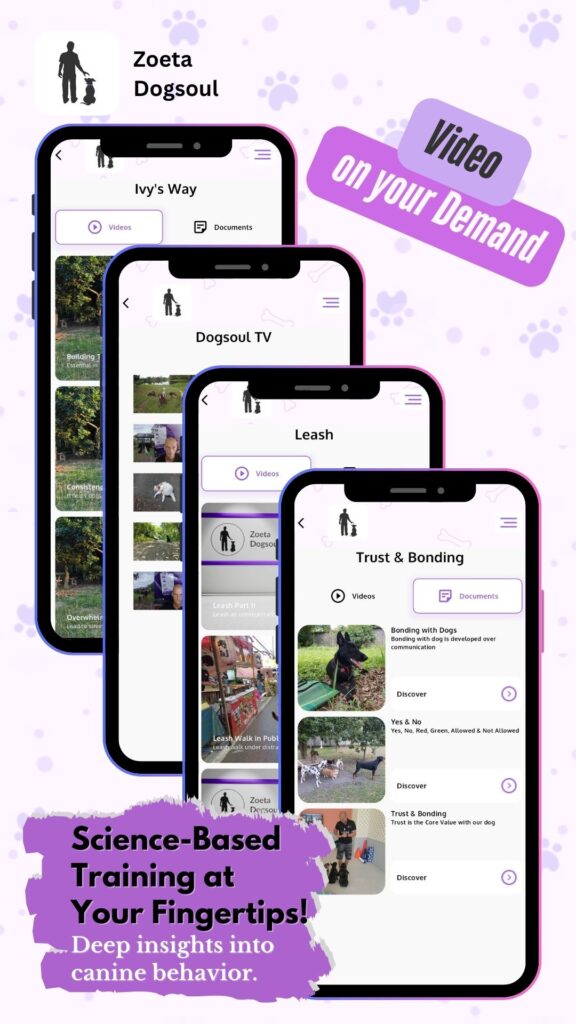
Boredom is the silent nemesis of canine contentment. A bored dog is an architect of chaos, crafting novel ways to entertain itself, often at the expense of your favorite shoes or garden. Tackling this issue head-on with engaging activities and consistent engagement can transform a potential agent of mischief into a calm and content companion.
Uncertainty breeds indecision. When a dog is unclear about what’s asked of it, it may hesitate or choose an action out of sync with our expectations. Ensuring commands are delivered with certainty and reinforced with positive feedback helps illuminate the path for our four-legged friends, guiding them towards desired behaviors.
Ultimately, addressing the underlying causes of unwanted behaviors is more than a quick fix; it’s about fostering an environment where dogs can flourish. By providing mental stimulation, ensuring clarity in communication, and nurturing our bond with them, we create a better world for our dogs—one filled with understanding, joy, and wagging tails.
In wrapping up our exploration of canine behavior, we have traversed the landscape of replacement, substitution, and alternative actions in dogs. These behaviors emerge as a tapestry woven from unmet needs, environmental cues, and the intricate dance of communication between dogs and their human companions. Let’s recap the key insights that can illuminate the path to enhanced relationships with our four-legged friends.
Replacement actions in dogs signify an attempt to satisfy an innate need or adapt to restrictions placed on their natural behaviors. It is the dog’s way of saying, “If I can’t do this, I’ll do that instead.” When a dog chews on furniture instead of toys, it’s not being destructive out of spite but rather seeking an outlet for its chewing instinct. Recognizing these actions helps us understand that our pets are not acting out but communicating needs we have yet to fulfill.
Substitution behaviors highlight the dog’s adaptability but also its frustration when natural instincts are thwarted. A snap at the air in place of the unattainable squirrel is not mere whimsy; it is a redirected effort to cope with the inability to act on instinctual drives. Such behaviors underscore the importance of providing appropriate outlets for our dogs’ energy and instincts.
Alternative responses, where dogs opt for unexpected behaviors, often stem from a disconnect in communication or personal preference. These moments beckon us to fine-tune our understanding and training approaches to ensure clarity and mutual comprehension.
With these insights in hand, we encourage all dog owners and enthusiasts to deepen their understanding of these canine behaviors. Reflect on your interactions with your pet—could there be unmet needs or miscommunications at play? Enhancing our knowledge empowers us to foster a more nurturing and responsive environment for our dogs.
Proactive measures such as structured training, mental stimulation, and clear communication are not merely suggestions but essential components in preventing problematic behaviors. Regular exercise, puzzle toys, and consistent training routines cater to both the physical and psychological well-being of our dogs, paving the way for harmonious coexistence.
We advocate for a compassionate approach to dog behavior management. By addressing the root causes of undesired actions, we move beyond temporary fixes to create lasting change and understanding. We urge you to apply these learnings in your daily life with your dog, to not only mitigate issues but enrich the bond you share.
As we conclude, the call-to-action is clear: embrace the knowledge you’ve gained, commit to proactive enrichment, and communicate consistently with your canine companion. In doing so, you’ll not only address behavioral concerns but also enhance the quality of life for both you and your pet. Together, let’s strive for a world where every wagging tail is a testament to a need met and a bond strengthened.
